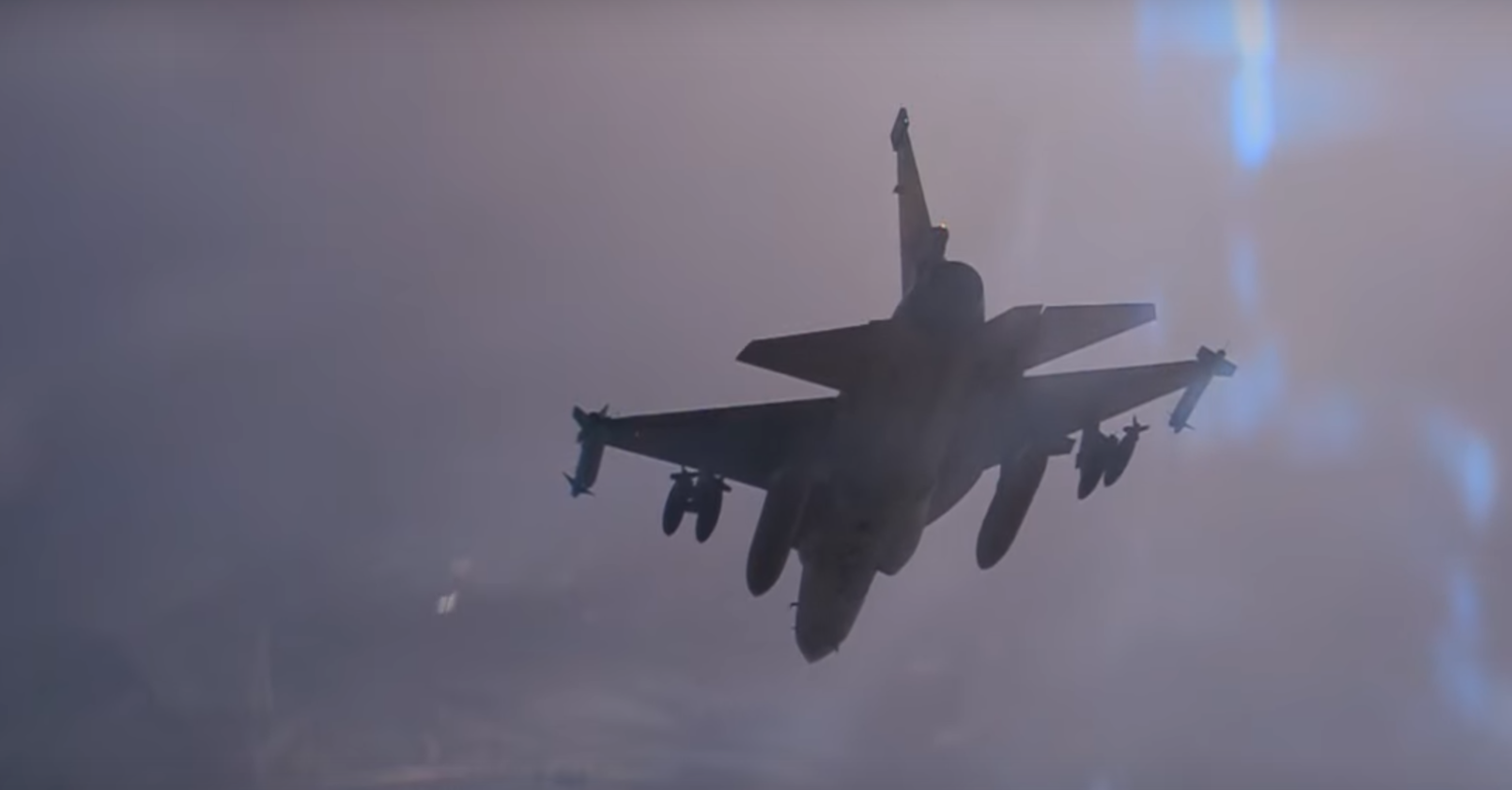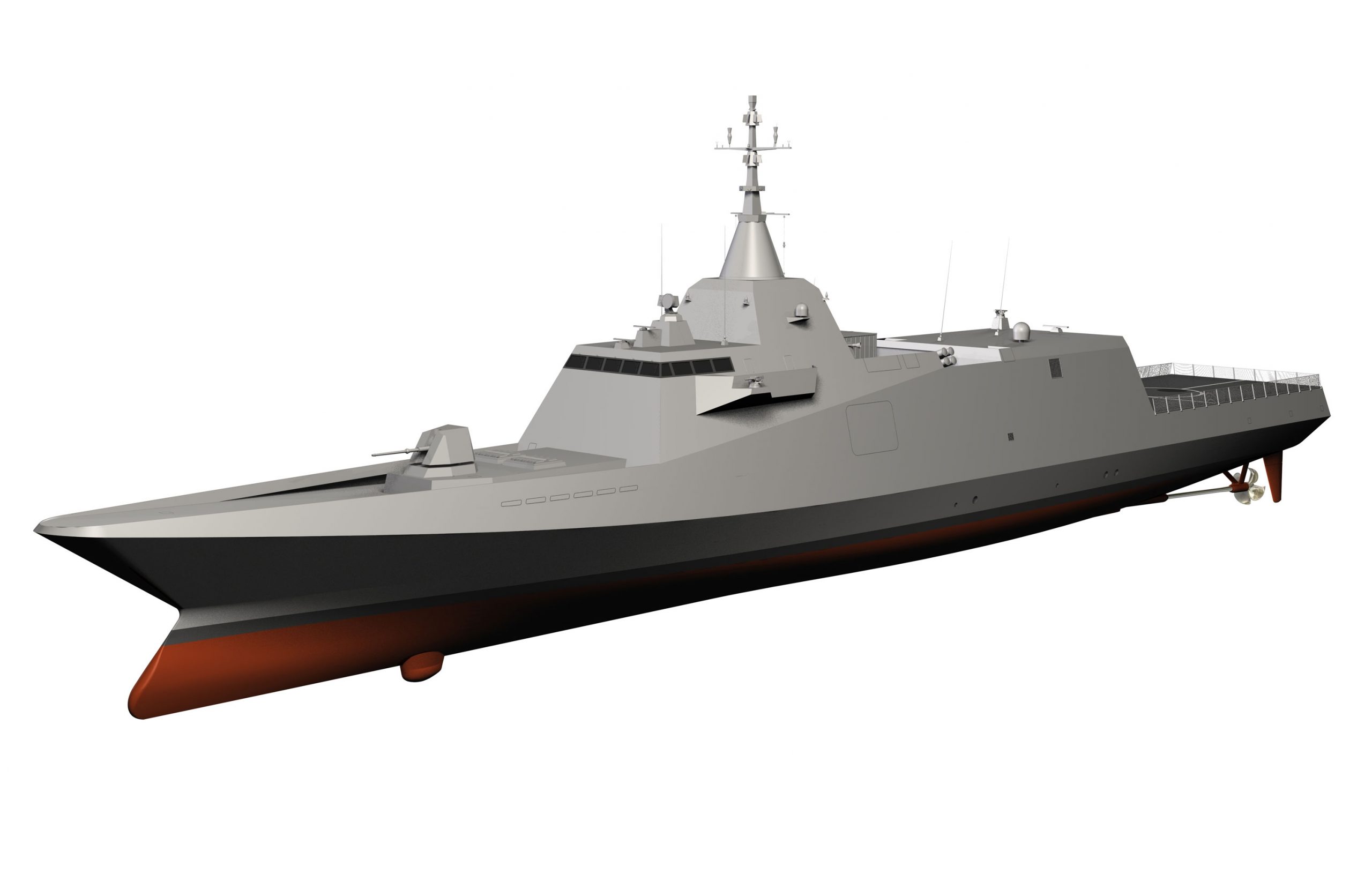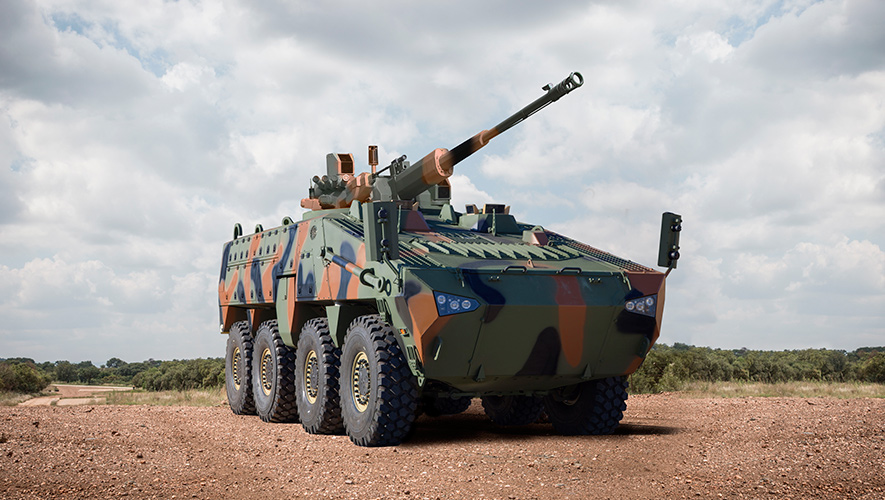2418Views 28Comments

Discussion: Pakistan’s options for addressing India’s air warfare lead (Part 1)
Foreword: This is not a news story, but a piece for the purpose of discussion. The details offered in this article as well as in subsequent parts are not authoritative pieces of information, but rather, perspectives on current events relating to the Pakistan Air Force.
On Friday, the Government of India formally ordered 36 Dassault Rafale multi-role fighters from France in a contract valued at close to $9 billion U.S. The first batch is expected to reach India by September 2019, and the order is expected to be complete by 2022. A summary of what is included in the deal as well as how the induction of the Rafale will benefit the Indian Air Force (IAF) and Indian defence industry can be found on this website. In parallel, the question of how the Rafale impacts the Pakistan Air Force (PAF) and what the PAF could do to manage the issue is also coming to the fore.
In light of Pakistan’s strenuous structural economic challenges, there is no straightforward answer. In fact, proposing a simplistic and crudely reactionary approach to the challenge of the Rafale – and the IAF generally – ought to be discouraged. Even if Pakistan and the PAF were to come across some meaningful measure of funding support (e.g. creditors willing to extend loans), a crude response to the challenge will result in the wastage of scarce funding – this is not something to be tolerated.
For Pakistan, it would be unwise to respond to India’s Rafale acquisition with simply a call for a directly equivalent platform. It is essential to understand that a fighter platform – i.e. an expensive and long-term commitment – must never be pursued for its own sake. Rather, it ought to be acquired to fulfill a set of objectives that are vital to the national security interests of the user.
These objectives could range from the need to introduce certain air warfare technologies, build capacity to undertake specific tasks (e.g. long-range air-to-ground strikes), or to perhaps plug operational gaps (e.g. a deficiency in numerical strength). This is not an exhaustive list, but professional defence planners would need to be rational in their efforts to justify multi-billion dollar procurements, and this is especially true in the case of Pakistan where structural economic challenges render multi-billion dollar arms acquisitions a relatively uncommon event.
For India, the Rafale purchase was driven by several core objectives, which are plainly evident in the actual contract it had signed. The first objective was to acquire certain technologies, such as a Western active electronically-scanned array (AESA) radar (i.e. Thales RBE2 AA) and next-generation air-to-air munitions (i.e. MBDA Meteor). However, it is important understand that India could also acquire this technology, or at least its analogues, from Israel, Russia, and potentially even the U.S. The technology was valuable, but only in a wider context, namely the fact that the Rafale itself is a very capable and versatile platform and that Paris is willing to economically engage and technically cooperate with the Indian defence industry.
From a physical standpoint, the Rafale strikes an enviable balance with range/radius, payload, operational availability (or holistic ease of maintenance and support), low-detectability/observability, and technology. The Rafale does not possess as much range or payload as the Su-30MKI, but it will be easier to mobilize in response to a wartime or pre-wartime problem. It is not as affordable as the Tejas, but the Rafale has the legs to engage in long-range strikes in enemy territory. This is the value of a solid medium-weight fighter, especially one that can swing into offensive and defensive mission profiles in short order. The Rafale will be a versatile fighter asset, one that the IAF will in all likelihood build into a sizable fleet. The commercial offset and defence industry concessions are valuable as well, but more so in a strategic and developmental sense, one with limited direct short-term operational impact (which is of primary concern to the PAF).
Part two of this series will argue why the JF-17 – especially Block-III – will need to be essential to the PAF’s response strategy, and part three will outline a general idea of how this could be achieved. This does not entirely remove the need for a secondary platform, especially in terms of shoring up numbers and fulfilling specific operational requirements. However, it would be recommended – if not likely – that the PAF take a conservative and rationalized approach to such an acquisition (if it is on the radar).
As a preview to part two, it is worth examining the fact that at this time, the JF-17 is the only platform that is readily accessible to the PAF in not only procurement terms, but also in terms of cost and domestic support. It is the fighter that the PAF can readily depend on in times of war without being put under the strain of a dwindling supply of spare parts (which is a factor with imported fighters). Moreover, its lower cost, as well as accessibility via domestic production and a friendly foreign supplier in China, make it an easier fast jet to replace when inflicted with attrition or losses. There is little reason why the PAF would – especially in terms of scarce financial resources – not prioritize JF-17 development.
This is not an indictment of other fighter platforms, especially in light of the superb technical merits offered by the Rafale, Typhoon, Gripen NG, or Su-35. Rather, this analysis is an attempt to address the threat posed by India’s air power advantage with the mechanisms assuredly available (based on public knowledge) to the PAF and Pakistan’s defence planners. In some instances, there is a clear difference between matching a rival’s acquisitions and actually addressing the threat posed by said acquisitions.



28 Comments
by Putin
PAF have 3 options:
1st option is to buy at least 30 Su-35 fighters in 3 years and keep development & production of JF-17 thunder.
2nd option and best option is to produce own variant of F-16 just like china does, it buy some jets from Russia and developed it’s own variant like Su-27/30 to J-11 and Su-33 to J-15.(Reverse engineering)
3rd and last option is to increase JF-17 payload to at least 7000 K.g. and mass produce it.
Defensive stance- acquire HQ-9 defense system and then no Rafael or Sukhoi will dare to enter in your territory.
I have mentioned 2nd option is best and if you need then take help of China they are mastered in reverse engineering.
thanks it was my first opinion i hope it will help.
Pakistan zindabad!!!!
by MT
pakistan investment in chinese airplane j11 is most likely scenario but order of a squadron SU35 is also possible post 2018-19.
Admin idea to bring up block3 with aesa nd other sophisticated technology won’t change the scenario.
The timeliness of delivery for block3ll decide.
if pak plans to induct block3 around 2020 the same time when india plans to induct Mk1a then there is little usage.
As we see HAL ramping up infrastructure nd stabilise component design which ll lead way to factory scale manufacturing from tejas SP9 for most components.
post 2020;hal ll have capabilities to manufacture 16 tejas/year. Israel is already supporting integration of aesa radar into modified LSP while weight stripping is most complex task facing HAL after IFR probes,aesa is accounted leading to removal of lead weight for stabilisation.
My point is simple: jf17 only edge over tejas ll be 80-90 block 1/2 aircraft but tejas ll cover all time lost by inducting superior technologies in aesa tejas mk1a
Jf block3 with aesa is probably not possible with an inferior engine as aesa needs many times more power reqd on cooling. so most likely;pak ll order RD33MK from Russians nd which may affect the time lime
by Perfectionist Lakho
What About “Irbis-E”.can we get it for JF-17??
by MT
Very unlikely. Russians don’t sell other subsystem. u can get them if u buy su35
by bill
The Block-III JF 17 has now much worth in near future for PAF so it should have stealth components i.e at least much frontal stealth as much possible to obtain. With that we should look for best AESA radars throughout the world most probably tailor made Italian one along with EW suit/EW gadgetry of Western origin to compete with Rafael. Foremost the a powerful engine with low IR/heat signature is must.
It should not be mere second tier jet as 5th gen jet induction may take longer time. On the other hand on urgent basis PAF should go for retiring Trench-1 EU fighters which with proper upgrades may prove to be much challenging for IAF. PAF should not only worry for near future but they should see the present challenges also.
In near future IAF may have 70% availability of their SU30 MKI as they are going for massive storage of required spares on the other hand PAF can’t go for next gen upgrades for their F16s due to tied hands by our so called ally USA, Turkey may help us to keep our F16s active but can’t help us much to get better tech for them i.e Viper upgrade.
by sufi
billal sahib ,
few days back i read an article ( not some tabloid news ) that i cant trace right now , it was mentioned in the article that the reason for selecting rafael is that it can carry nuclear weapons ( french dont mind that ) otherwise it has no edge on the other platform options that india has….throw some light on this please.
by Abdul Rashid
Hi Sufi,
Is this the article you are referring to?
http://nationalinterest.org/blog/the-buzz/why-india-wants-frances-dassault-rafale-fighter-jets-they-17777
by sufi
yep , thats the one.
by Steve
In hindsight another 18 (+18?) F-16V if we could have arranged funding may have been a better choice than flights of fancy about SU-35 etc. It is an easy and cost effective solution. PAF obviously love the plane. The Americans did not refuse the planes, just the subsidy. We did not have to walk away in a huff with no good alternative. Conditions etc could have been mitigated with clever management. It is naive to think we can walk away from the Americans totally (IMF etc). Maybe with a new president in the issue could be revisited. Appoint some competent people in the US embassy to build up links with congress with lobbying etc. Get overseas Pakistanis involved. The whole world does it, why not us?
by Quraishi
Good discussion,
Looking for a bigger picture, the options cannot be militarily only, as I always say. Had Indian not done massive economic reforms in the 90s it would most likely have never been able to achieve half of what its militarily procuring now.
If the top Pakistani military thinking thinks so smart and come up with a solution that completely neutralizes threat from rafales, next with the economic capacity available to India it may go on procuring f-35, f-22 then what?
People here should focus on a vision to always stay ahead of competition, rather then looking for solutions to specific problems, coz no matter how good one is in solutions, soon there maybe a problem with no effective solution in hand.
For me the long term solution must include economic and justice reforms to Pakistan ends up creating more value.
by Bilal Khan - Quwa
Yes, timelines is a critical issue, as is the JF-17’s current airframe.
by MT
Main reason behind using aircraft to deliver nukes
1. More control & ability to turn off the missions
2. 400-500 KM width for pakistan from Indian borders which come in combat range for all of Indian fighters
India is among top 5 nations in missile & rocket program with ICBM,SLBM,Nuclear triad & relatively matured hypersonic program.
On the contrary
1. Indian MRBM & ICBM are specially made taking china into account
by MT
Rafale has edge over all fighter jets barring F22 & F35
Su35 is indeed a potent fighter but just like other russian system,they suffer with low quality & serviceability
Main reason behind using aircraft to deliver nukes
1. More control & ability to turn off the missions
2. 400-500 KM width for pakistan from Indian borders which come in combat range for all of Indian fighters
India is among top 5 nations in missile & rocket program with ICBM,SLBM,Nuclear triad & relatively matured hypersonic program.
On the contrary
1. Indian MRBM & ICBM are specially made taking china into account
by MT
1. Introducing composite & stealth in block 3 is unheard
2.New modified engine ??Not sure for block3
3. Aesa radar:True but all aesa platforms suck too much power.so u need a powerful engine
4. RD33/93 or RD93MK isnt an advanced engine.Infact the RD93 released smokes
by MT
I guess, you have your sources on . Do you have new update on JF17 block 3 program & its time line with respect to
1. Decision on selection of new radar
2. new engine pushed to block 4?
by Bilal Khan - Quwa
No serving official info on either.
by Salman Khan
Actually these elections are quite disturbing. Whoever comes out as winner, things won’t be the same anymore.
by Steve
Talking about the economy is great but as long as the public keep electing donkeys especially the 2 blood sucking families which have sucked the country dry in the last 30 years nothing is going to change. Fancy toys for the forces are expensive and the army cannot do everything including economic management and anti corruption duties and guard the countries economy from its own greedy rulers. Corruption has become part of the culture in the country affecting everyone. This is very dangerous as our sworn enemies have economies of scale and we will have to work very hard as a nation to match it. CPEC won’t save us from our own disasterous incompetence and mismanagement. The country needs to be well led, but that’s not possible with this generation of politicians.
by Steve
Well our foreign office (sans foreign minister) and embassy have their work cut out, don’t they. Are they reaching out to both candidates? I think not..
by MT
Around 2018-20; Russia will have have reduced economy(2 trill $ in 2014 into 1.3 trillion 2016 & same in 2018) & it will be politically,economically feeble under complete transitioned into chinese colony
.Say thanks to reckless putin who have turned Russia into bankrupt nation
Russia have nothing much to offer in technology if we exclude Defense and civil nuclear technology. India score better than russia in almost all sectors manufacturing
by Steve
Your heart is in the right place but your mail is confused. Overseas Pakistanis in USA and UK have been citizens for generations. Meaning they HAVE right to vote and influence governments if they are organised. The issue at hand is getting more
F-16’s…
by Mohammad Umer
I am not a defence expert. But my poit is in this situation Pakistan have to go for . SU 35 along with the acquisition of S400 air defence system from Russia. Which is capable to counter rafael and f35 as well. And this defence system is far cheaper option than to acquire 30 western fighters. What you experts say?
by Saptarshi Dasgupta
As an Indian i see a number of possibilities for Pakistan. Pakistan Air Force pilots are amongst the best in the world.Only problem Pakistan Air Force now faces is cash crunch. So in immediate future Pakistan should rely on F-16V (latest F-16) with AESA and JF-17 Block 2. In 4 years PAF should acquire J-31 and JF-17 Block 3. What this will do is that PAF will have lesser number of fighter types and save costs. Newer RD-33 derivatives will be on J-31 so there will be a commonality with JF-17. While JF-17 would be for our Tejas, Jaguars and Older Mig-29, F-16V will be a deterrent against Su-30mki, Mirage 2000-5 and Mig-29k. J-31 will be for PAK-FA and Rafale.Given the good quality of PAF pilots this much is sufficient and within budget
by Ashwin
The most plausible solution is to upgrade their JF-17, Totally revamp it
New Composite Structure, make use of more lighter and stronger materials
Any western engine. not the Russian ones, any good engine from France or U.S with complete transfer of technology and rebuild facilities, Engine should essentially be able to carry more load.
Western AESA radar, Avionics, Targeting Pods and EW suites.
Above changes would make JF-17 a formidable jet, and any country would think twice before messing with Pakistan.
by Omer Farooq
Thanks for your positive comments and staying out of our evelasting war on social media through comments
by xicor khan
a very sensible reply..u saved my writing time
by fapple fapple
The eurofighter is a good fighter jet and well suited for bombing; however, given the tigh geographic nature of any conflict with India, it would be better to engage in the acquisition of closer-range fighters such as the JF 17 and maintain the current f16s until they are obsolete. This is evidenced as a while back, Pakistani f16s completely dominated RAF typhoons in a close range combat exercise, though this is also down to the nature of the pakistani pilots’ training as they are trained to fight close range.
by fapple fapple
A would say that is a very good insight into the mechanics of social control and national governing. It begs one to question whether this is the reason why more economically developed and modern nations so strongly support the instillation of a democracy in emerging countries such as Iraq at the time. Maybe they realize the key to locking the gate to national prosperity of other countries is to eliminate the possibility of good leadership arising under the pretext of empowering the people?